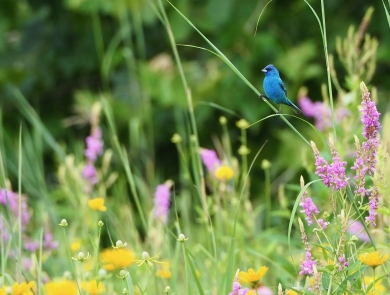What We Do
Our Services
With 80 percent of Americans living in and around cities, ensuring they can connect to nature is vital – both to people’s quality of life and the future of conservation.
That’s where the Urban Wildlife Conservation Program comes in.
Since 2000, the U.S. Fish and Wildlife Service has partnered with urban communities to improve residents’ access to nature. Often, these efforts involve urban wildlife refuges — the 100+ national wildlife refuges located within 25 miles of urban areas. Participants in the Urban Bird Treaty, a Service effort combining bird conservation and community improvement, are also frequent partners.
The National Wildlife Refuge System and the U.S. Fish and Wildlife Service's Migratory Birds Program allocate $7.7 million a year to scale local solutions to the broader wildlife conservation community.
List of Urban Wildlife Refuges
List of Urban Partnership Cities
By the Numbers
- 101 urban national wildlife refuges within 25 miles of 250,000 people or more
- 8 flagship urban national wildlife refuges
- 32 designated Urban Wildlife Refuge Partnership cities, 26 with nearby refuges
- 30 Urban Bird Treaty cities, 16 that are also associated with refuge partnerships
Conservation Through Inclusion
The Urban Wildlife Conservation program centers on the idea that building strong, meaningful relationships with diverse communities is key to achieving equitable conservation outcomes. Community-building requires a new way of doing business – one that prizes innovation, promotes organizational culture change and builds a workforce that better mirrors America’s racial and ethnic diversity.
At the core of the urban program are eight Standards of Excellence. These measurable indicators of success are also commitments to racial equity, social and environmental justice. The standards are:
- Know and relate to the community.
- Use stepping stones to engage people in nature.
- Build partnerships.
- Be a community asset.
- Ensure adequate long-term resources.
- Provide equitable access.
- Ensure visitors feel welcome and safe.
- Model sustainability.
Critical Elements
Our work has taught us that how we foster a community-centered approach is as important as what we do. In support of the Standards of Excellence, we developed criteria to define how we work with new and ethnically diverse audiences to ensure positive and relevant conservation experiences.
These critical elements focus on building long-term, meaningful relationships. Each element is essential and interrelated. We measure every action against these elements to ensure continued progress. The elements are:
- Community-focused: Prioritize community needs with long-term commitments.
- Intentional: Adopt community engagement methods that are well-informed, purposeful and measurable.
- Inclusive: Implement equitable solutions to involve the community in solving conservation challenges.
- Collaborative: Form long-term transformational relationships with community partners and across Service programs with the goal of increasing the collective impacts of conservation efforts.
MORE ABOUT WHAT WE DO











